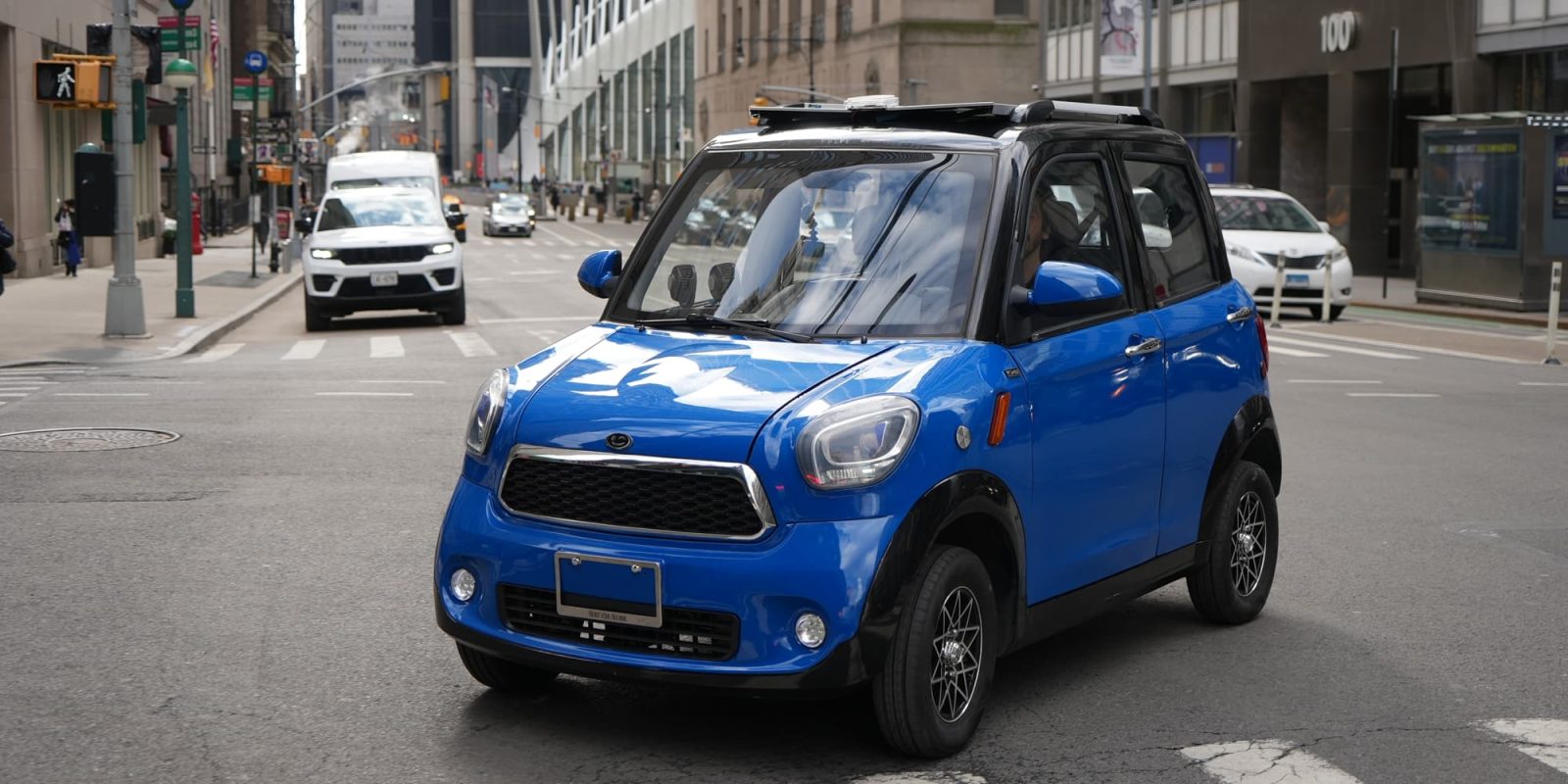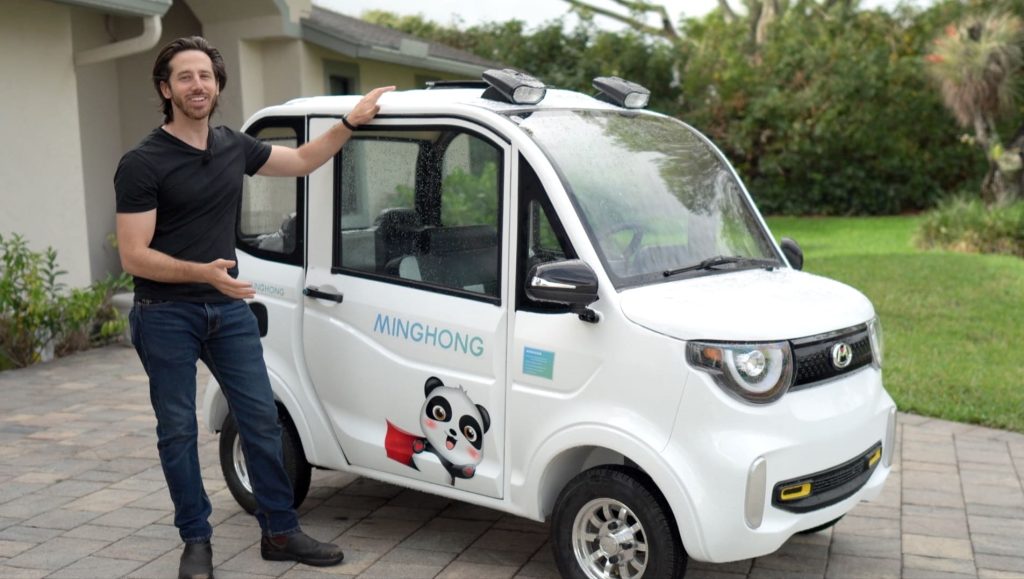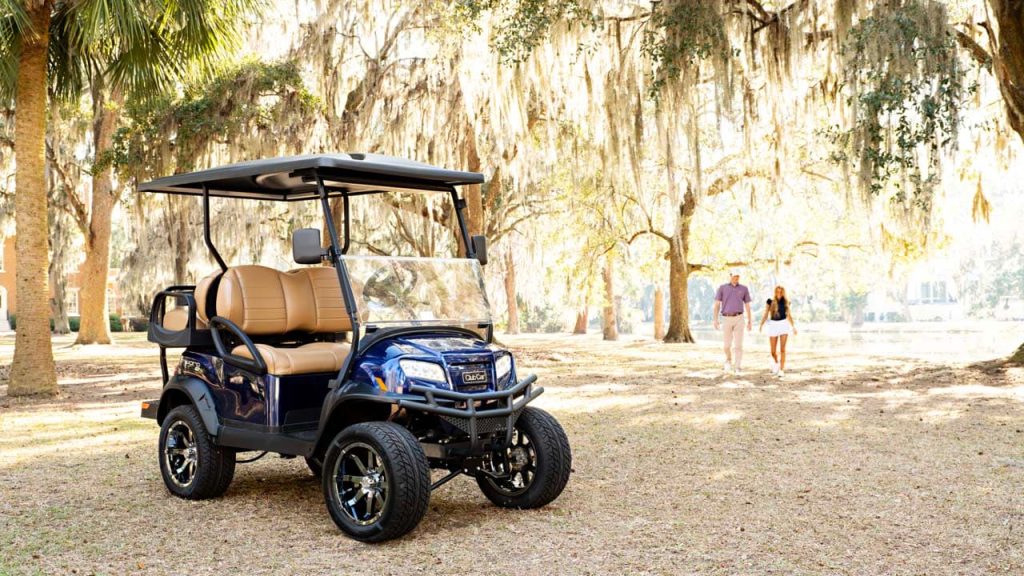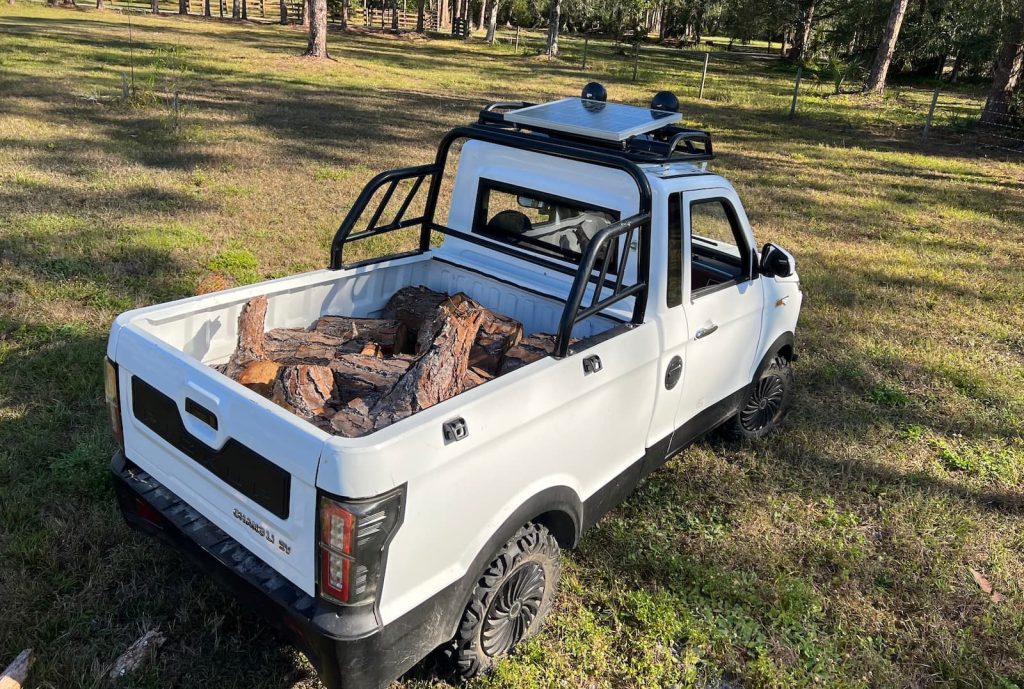
In Part 1 of this series titled “Everything you need to know about electric micro-cars, NEVs, LSVs, & golf carts,” we discussed the various categories of micro-cars, neighborhood electric vehicles (NEVs), low-speed vehicles (LSVs), and golf carts. We also covered how these vehicles are becoming such popular car alternatives for so many people. Now in Part 2, we’ll dive into the important topic of what makes these vehicles street-legal for use on public roads.
As we discussed in Part 1 of this series, the term LSV (or low-speed vehicle) is the only important consideration here, as “NEV” is merely a colloquial nickname. The term LSV, on the other hand, is codified into law by the US Department of Transportation and is a federally recognized category of motor vehicles by the National Highway Traffic Safety Administration.
That’s the key to making many of these tiny cars street-legal for use on public roads, though the downside of that is you’ll probably have to register, tag, and insure your LSV in most states in the US.
One point should be made extremely clear though: In almost every case, the question of whether or not an LSV is street-legal comes down to its manufacturer, not to you as the owner or driver. Outside of a few specific cases in a minority of cities and states, non-street-legal LSVs can not be modified or turned into street-legal LSVs by their owners. They need to be originally manufactured to meet federal regulatory guidelines.
Okay, now let’s talk about those guidelines (and some of the exceptions).

Federal regulation of low-speed vehicles
In order for LSVs to be considered for sale in the US to be used on public roads, they must be produced to meet federal regulations for LSVs. This means that they must be designed and manufactured from the outset for street-legal use.
The first step is ensuring that the factory is registered with the NHTSA. Before buying an LSV, you should always ask the vendor if the vehicles are registered with the NHTSA. If the answer is “don’t worry about it, they only go 25 mph,” then 99 out of 100 times you’re not looking at a street-legal LSV.
Without this critical step of being registered and approved as an LSV manufacturer by the NHTSA, proper VINs (vehicle identification numbers) can not be assigned to the vehicles for registration. A VIN that conforms to the same rules as those used on all street-legal vehicles in the US – including full-size cars and trucks for highway use – is just one of more than a dozen federal requirements for LSVs.
This is the step that most foreign-manufactured and imported LSVs miss, since very few overseas LSV factories are actually registered with the NHTSA, meaning they can’t offer a US VIN code. Chinese micro-cars that are imported to the US often have VINs on the frame, but they are Chinese VINs. That’s the case with my internet-famous mini-truck from China. It has a VIN, but it means nothing in the US since it’s a Chinese VIN.

Next, there are several other requirements that mimic those for full-size cars, from visibility to safety equipment. Low-speed vehicles must have backup cameras with very specific viewing angle requirements. Again, these are the same requirements used for full-size cars and trucks in the US. Slapping a camera on the back of a micro-car or golf cart isn’t enough to fulfill this requirement.
Other requirements like pedestrian warning systems (also referred to as pedestrian noisemakers) are required for LSVs with electric drivetrains. Once again, these have the exact same requirements as for new electric cars like Teslas, etc. Very specific octave levels and decibels levels must be programmed into the car’s noisemaker to warn pedestrians, especially vision-impaired pedestrians, of the vehicle’s presence. The sound must reach certain pitches at different speeds and must modulate as the vehicle’s speed increases and decreases. The exact regulation text for just the pedestrian noisemaker is dozens of pages long, believe it or not.
These are some of the more difficult and cumbersome regulations applied to LSVs since they share the same rules as existing cars, but they’re not the only ones. LSVs must also have lap belts or 3-point seat belts that meet DOT requirements for full-size cars as well as windshields that use specific DOT-approved glazing. Both the windshields and the seat belts must be produced by suppliers that are already registered with the DOT. Simply installing any basic seat belt isn’t enough.
Other requirements cover aspects related to lighting, braking systems, reflectors, mirrors, and more.
Where LSVs differ in street-legal requirements from full-size cars largely comes down to the more complicated safety requirements. Crumple zones, airbags, radar, and other major pieces of safety equipment aren’t required in LSVs, and the vehicles themselves aren’t required to undergo crash testing. If they were, the results likely wouldn’t be pretty due to the reduced safety equipment in the vehicles.
That’s one of the reasons that LSVs are limited to just 25 mph (40 km/h) top speed and can only be operated on roads with speed limits of 35 mph (56 km/h). Both of these are part of the federally mandated LSV regulations and are designed to prevent these vehicles from mixing with larger full-size vehicles at higher speeds, where the result of crashes are more likely to be fatal.

Some cities and states have more lax LSV laws
The above is not a complete list of the regulations for LSVs, but paints a picture of the somewhat complicated path required for companies to meet the federal regulations related to LSVs.
However, these are just the federal regulations. Most states describe low-speed vehicles in their state highway codes and have a section deferring regulations to match those at the federal level. In other words, they use the federal rules for LSVs in their own states. A few states set aside more strict requirements, while a few states offer more lenient requirements.
While the vast majority of US states use the federal rules for LSVs, Colorado is an example one state that sets its own more lenient rules that remit several of the more complicated manufacturing requirements. This makes it easier to register things like golf carts as LSVs, though this case is a rare one in the US.

Are golf carts street-legal too?
No, golf carts almost always not street-legal. This is true in nearly every city and state in the US.
Are there exceptions to this rule? Absolutely. But they usually only occur at the local level. That means a state, city, or township has to create a specific ordinance allowing for golf carts to be operated on public roads. There are a few towns that have become famous for this, such as Peachtree City in Georgia, but they are a minority.
To determine if golf carts are considered street-legal and can be used on public roads in your area, you should check with your local police department or Department of Motor Vehicles.
The only time that golf carts do meet federal standards for LSVs is when they are specifically produced as LSV golf carts. Most major golf cart manufacturers in the US do in fact produce LSV versions of their golf carts, meaning they were designed to meet federal low-speed vehicle regulations. The problem is that many have yet to update those models to the most recent version of LSV regulations, which added backup cameras and pedestrian noisemakers to the list of required equipment only a few years ago.
While many LSV golf carts have added backup cameras, most still lack a pedestrian warning system. In reality, you’ll likely never actually get cited by a cop for operating an LSV golf cart that doesn’t have a pedestrian warning system in it, mostly because very few cops would even know that they require one. But if you want to know the letter of the law, then without meeting full compliance, such LSV golf carts aren’t technically street-legal. And when it comes time to register the LSV, it may not be possible without the complete suite of required equipment.

Beware of unscrupulous dealers claiming ‘street-legal’ status
As LSVs have become more popular in the US, so too have shady vendors purporting to sell street-legal LSVs.
Most, if not all, are imported Chinese models that were designed for the Chinese market. Ironically, they aren’t even technically street-legal in China since there are no equivalent LSV laws in China. But they are still commonly used by elderly drivers in China where their name loosely translates to “happy grandpa” cars.
These Chinese models have begun being imported to the US in larger numbers. Models marketed as “Chang Li” vehicles are one of the most common, though Chang Li is simply a single manufacturer and most “Chang Li” vehicles in the US aren’t even produced by Chang Li. At this time, no Chang Li vehicle is street-legal in the US as they do not meet federal regulatory standards for LSVs.

These vehicles lack many of the requirements for street-legal LSV status, usually relating to DOT-stamped safety glass, pedestrian warning systems, proper lighting, DOT-certified seat belts, and other important details. Perhaps most critically, these vehicles do not feature NHTSA-compliant VIN (vehicle identification number) codes. While many come with a VIN, they are actually Chinese VINs and can not be found in the NHTSA database because the manufacturer is not registered with the US government to produce cars for export to the US.
These non-compliance issues haven’t stopped many of shady US resellers from hawking such vehicles with claims of “street-legal” plastered over their websites and marketing materials. But the fact is that nearly no Chinese-manufactured LSVs, NEVs, or micro-cars are currently street-legal in the US, unless they fit into certain city or state laws that have a looser set of requirements than federal low-speed vehicle laws. In fact, at the time of writing, I know of only two Chinese-manufactured LSVs that are currently street-legal in the US, the Wink and the Pickman. And in the case of the Wink, which I know more about after having tested them myself, that’s only because the company spent nearly two years designing the vehicles to be produced in China to US safety standards and properly registered their factory with the NHTSA.
What street-legal LSVs and golf carts exist in the US?
While the category is still in its infancy, there are already several options for street-legal LSVs in the US. Some are already on the road, while others are expected to enter the market later this year.
We will cover these options in detail Part 3 of this series, which will be coming later this week.
Stay tuned!
FTC: We use income earning auto affiliate links. More.




Comments